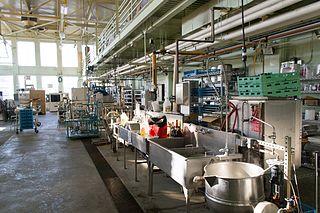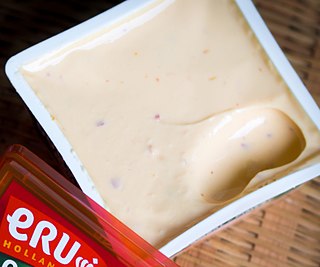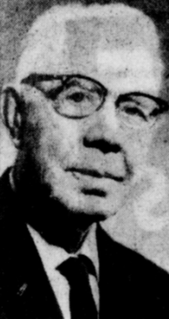Related Research Articles

Agricultural science is a broad multidisciplinary field of biology that encompasses the parts of exact, natural, economic and social sciences that are used in the practice and understanding of agriculture. Professionals of the agricultural science are called agricultural scientists or agriculturists.

Food science is the basic science and applied science of food; its scope starts at overlap with agricultural science and nutritional science and leads through the scientific aspects of food safety and food processing, informing the development of food technology.

MathWorks is an American privately held corporation that specializes in mathematical computing software. Its major products include MATLAB and Simulink, which support data analysis and simulation.
The Combat Capabilities Development Command (CCDC) Soldier Center, now CCDC SC was formerly the United States Army Natick Soldier Research, Development and Engineering Center, and is a tenant unit of the United States Army Natick Soldier Systems Center (SSC), or Soldier Systems Center Natick. CCDC SC is a military research complex and installation in Natick, Massachusetts charged by the U.S. Department of Defense with the research and development of food, clothing, shelters, airdrop systems, and other servicemember support items for the U.S. military. The installation includes facilities from all the military services, not just the Army, and is so configured to allow cross-service cooperation and collaboration both within the facility and with the many academic, industrial and governmental institutions in the Greater Boston Area.
Butterfat or milkfat is the fatty portion of milk. Milk and cream are often sold according to the amount of butterfat they contain.
Samuel Seymour Epstein was a physician and, at the time of his death, professor emeritus of environmental and occupational health at the School of Public Health of the University of Illinois at Chicago. He is known for his contributions on avoidable causes of cancer, for which he was given the Right Livelihood Award in 1998. His papers are held at the National Library of Medicine in Bethesda, Maryland.

Cheese spread is a soft spreadable cheese or processed cheese product. Various additional ingredients are sometimes used, such as multiple cheeses, fruits, vegetables and meats, and many types of cheese spreads exist. Pasteurized process cheese spread is a type of cheese spread prepared using pasteurized processed cheese and other ingredients.

Tomato soup is a soup with tomatoes as the primary ingredient. It can be served hot or cold, and may be made in a variety of ways. It may be smooth in texture, and there are also recipes that include chunks of tomato, cream, chicken or vegetable stock, vermicelli, chunks of other vegetables and meatballs.
Food chemistry is the study of chemical processes and interactions of all biological and non-biological components of foods. The biological substances include such items as meat, poultry, lettuce, beer, milk as examples. It is similar to biochemistry in its main components such as carbohydrates, lipids, and protein, but it also includes areas such as water, vitamins, minerals, enzymes, food additives, flavors, and colors. This discipline also encompasses how products change under certain food processing techniques and ways either to enhance or to prevent them from happening. An example of enhancing a process would be to encourage fermentation of dairy products with microorganisms that convert lactose to lactic acid; an example of preventing a process would be stopping the browning on the surface of freshly cut apples using lemon juice or other acidulated water.

Food packaging is packaging for food. A package provides protection, tampering resistance, and special physical, chemical, or biological needs. It may bear a nutrition facts label and other information about food being offered for sale.
Food Technology is a monthly food science and technology magazine published by the Institute of Food Technologists (IFT) in Chicago, Illinois. The magazine addresses current issues related to food science and technology, including research, education, food engineering, food packaging, nutraceuticals, laboratory issues, and other items related to IFT. The magazine is free to IFT members as part of their annual dues.
The Journal of Food Science is a peer-reviewed scientific journal that was established in 1936 and is published by John Wiley & Sons on behalf of the Institute of Food Technologists in Chicago, Illinois. From 1996 to 2005, it was ranked eighth among impact in scientific journals publishing food science and technology.
Gideon E. "Guy" Livingston was an American food scientist who was responsible for founding Phi Tau Sigma at the University of Massachusetts Amherst. He was also well known in food safety for foodservice establishments and for refrigerated foods shelf-life studies.
The Beef Hormone Dispute is one of the most intractable agricultural controversies since the establishment of the World Trade Organization (WTO).
Abe Anellis (1914-2001), was a food microbiologist.

Cengage Group is an American educational content, technology, and services company for the higher education, K-12, professional, and library markets. It operates in more than 20 countries around the world.
Based on advances in food research technology, and methodologies for the improvement of U.S. military soldiers' overall health and nutritional status, the history of military nutrition in the United States can be roughly divided into seven historical eras, from the founding of the country to the present day. Through the research and guidance of medical and military professionals, rations and packaging have been consistently and dramatically improved.

A retort pouch or retortable pouch is a type of food packaging made from a laminate of flexible plastic and metal foils. It allows the sterile packaging of a wide variety of food and drink handled by aseptic processing, and is used as an alternative to traditional industrial canning methods. Packaged foods range from water to fully cooked, thermo-stabilized (heat-treated) high-caloric meals such as Meals, Ready-to-Eat (MREs) which can be eaten cold, warmed by submersing in hot water, or through the use of a flameless ration heater, a meal component introduced by the military in 1992. Retort pouches are used in field rations, space food, fish products, camping food, instant noodles, and brands such as Capri Sun and Tasty Bite.

Cheese sauce is a sauce made with cheese or processed cheese as a primary ingredient. Sometimes dried cheese or cheese powder is used. Several varieties exist and it has many various culinary uses. Mass-produced commercial cheese sauces are also made by various companies, in both liquid and dry forms. These prepared sauces are used by consumers and restaurants, and commercial formulations are used in the production of various prepared foods, such as macaroni and cheese mixes and frozen meals.

Harry Willis Miller was an American physician, thyroid surgeon and Seventh-day Adventist missionary. Miller was a vegetarian and pioneer in the development of soy milk.
References
- Mermelstein, N.H. and F.R. Katz. "Advancing Food Science and Technology for Fifty Years." Food Technology. January 1997: pp. 8–11.